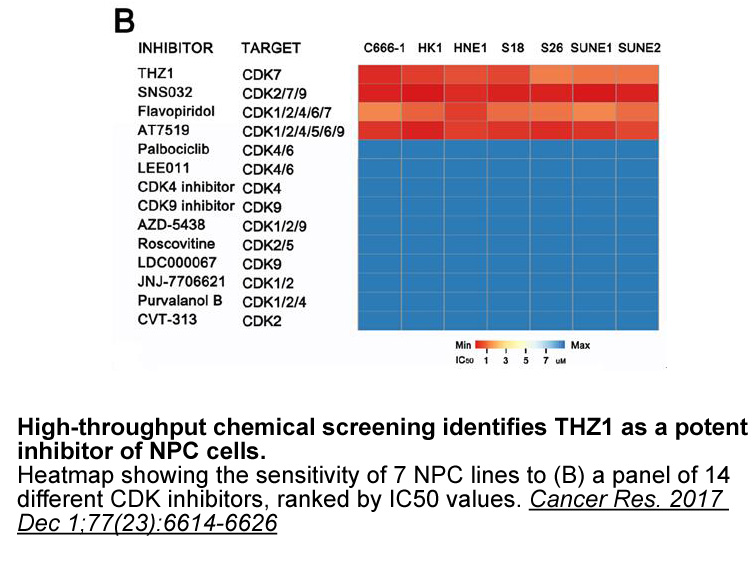Archives
trifluoperazine The cholinergic system has been shown
The cholinergic system has been shown to play a role in regulation of the inflammatory response [13] as well as in the influence of the metabolism of PCa cells [14]. The reduced activity of cholinesterase (ChoE) and the consequent increased amount of trifluoperazine has been shown to lead to a cholinergic overstimulation and increase in proliferation and dissemination of PCa, leading to worse oncologic outcomes [14], [15], [16].
Materials and methods
Results
Discussion
In the present study, we investigated the role of preoperative serum ChoE levels in contemporarily patients treated with RP for clinically nonmetastatic PCa using a large multicenter dataset. We found that low levels of preoperative ChoE are associated with adverse clinicopathologic PCa features. Preoperative ChoE ≤ 6.52 U/l was associated with higher biopsy and pathologic Gleason score as well as advanced pathological T stage. These findings are consistent with those reported in a biomarker phase I/II study that found significantly lower ChoE levels (serum acetylcholinesterase and plasma butyrylcholinesterase) in patients with PCa when compared to healthy controls (P < 0.001). Moreover, the authors found that low ChoE was associated with adverse tumor features such as higher Gleason score or bone metastasis [15]. We expand upon these findings by establishing the value of preoperative ChoE for predicting extracapsular extension and lymph node metastasis. In a retrospective study, Koie et al. investigated butyrylcholinesterase in 535 patients treated with RP for PCa and found an independent association with BCR (HR 10.3, 95% CI 1.31–3.03, P = 0.001) [16]. Despite achieving statistical significance, the relative small population and the evaluation of butyrylcholinesterase only in a preoperative multivariable model, do not allow any conclusions on its true clinical value. In our study we investigated the predictive value of preoperative serum ChoE using a visual assessment of the functional form of the association of ChoE with patients’ outcome. We could identify an “optimal cut-off” for the selection of patients who are more likely to fail surgery and experience BCR. This is a more targeted and specific approach compared to those of previous studies. Moreover, we build and internally validated preoperative and postoperative models for the identification of early and late BCR. This has relevant clinical implications as the identification and discrimination of these patients is necessary for personalized accurate counseling regarding adjuvant treatments versus surveillance. Nevertheless, despite its statistical significance in univariate and multivariable analyses, we failed to detect a clinical value to adding preoperative ChoE to prognostic models and, further, did not see an improvement of the net benefit in decision making analyses.
In summary, our results support the hypothesis that reduced ChoE activity may be functional in neoplastic cell transformation as it was associated with adverse tumor characteristics and oncologic outcomes like early BCR. The association of ChoE with tumorigenesis has been described more than 20  years ago [19], and has been investigated in several cancer entities [20], [21]. Moreover, epidemiological studies have shown that occupational use of pesticides which inhibit ChoE increases the risk of cancer [22], [23].
The prostatic gland has shown to express a high density of cholinergic fibers [24], [25]. Recently, Magnon et al. found that the signaling pathway of the sympathetic and parasympathetic nervous system promotes tumor growth by producing norepinephrine and acetylcholine in mouse models. Moreover, the authors quantified nerve fiber density in human PCa and found that cholinergic fibers were largely restricted to the tumor and significantly associated with adverse pathologic features (P < 0.001) [14
years ago [19], and has been investigated in several cancer entities [20], [21]. Moreover, epidemiological studies have shown that occupational use of pesticides which inhibit ChoE increases the risk of cancer [22], [23].
The prostatic gland has shown to express a high density of cholinergic fibers [24], [25]. Recently, Magnon et al. found that the signaling pathway of the sympathetic and parasympathetic nervous system promotes tumor growth by producing norepinephrine and acetylcholine in mouse models. Moreover, the authors quantified nerve fiber density in human PCa and found that cholinergic fibers were largely restricted to the tumor and significantly associated with adverse pathologic features (P < 0.001) [14 ]. These findings set the ground for new research regarding the role neurotransmitters in the development and progression of PCa. In this context, ChoE is a readily available and easily measurable enzyme, which could reflect the tumor's own microenvironment.
]. These findings set the ground for new research regarding the role neurotransmitters in the development and progression of PCa. In this context, ChoE is a readily available and easily measurable enzyme, which could reflect the tumor's own microenvironment.